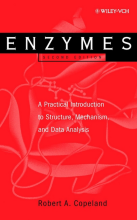Chemical Mechanisms in Enzyme Catalysis - Chemical Mechanisms for Transition State Stabilization - Covalent catalysis
6 important questions on Chemical Mechanisms in Enzyme Catalysis - Chemical Mechanisms for Transition State Stabilization - Covalent catalysis
What happens with covalent catalysis?
What are the 2 states in covalent catalysis?
What 2 forms of covalent catalysis are there?
Electrophilic catalysis
- Higher grades + faster learning
- Never study anything twice
- 100% sure, 100% understanding
What is nucleophilic catalysis?
On what depends the strangest of a nucleophilic reaction?
Nucleus that donates the most at pH 7 is the best.
So: +nucleophilicity --> + covalent bond --> + enzyme activity
What is electrophilic catalysis?
The question on the page originate from the summary of the following study material:
- A unique study and practice tool
- Never study anything twice again
- Get the grades you hope for
- 100% sure, 100% understanding
































